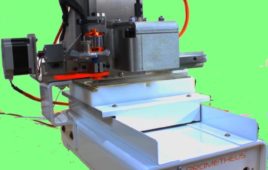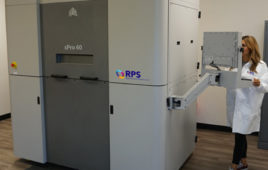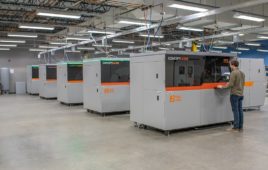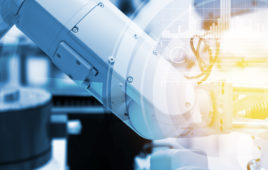Soil scientists at Abertay Univ. are using 3-D printing technology to find out, for the very first time, exactly what is going on in the world beneath our feet.
In the same way that ecologists study the interactions of living organisms above ground, Prof.Wilfred Otten and researchers at the university’s SIMBIOS Centre are taking advantage of the new technology to do the same below ground.
Using x-ray computed tomography (CT scanning), the team have already been able to create 3-D images of the intricate structure of soil—a network of pores not unlike the holes in an Emmental cheese.
View: 3D-Printing Soil Structures
However, they now want to know how these holes, or “pore spaces”, determine the ways in which the fungi and bacteria living within them interact.
And 3-D printing technology has enabled the scientists to start finding out, as they can now turn the 3-D images on the computer screen into real-life, handheld, 3-D objects.
The incredibly detailed plastic cubes that are printed out are replicas of the structure of the soil, and are being used by the scientists as experimental systems in the laboratory.
By inserting microorganisms (such as fungi and bacteria) into the pore spaces within the plastic soil, the scientists can now observe how these microorganisms move through it, survive, find food sources and interact.
Although 3-D printing is becoming more common, and people can buy 3-D printers to use at home, it has never been used to print something so intricate and detailed as soil before.
Before CT scanning became available, soil samples were dug up and the structure and pore networks of the soil were disrupted.
This, Otten explains, was like studying the rubble of a demolished building: “In the past, before x-Ray CT scanning became available, soil samples were taken back to the laboratory and studied there. But that’s like studying the rubble of a collapsed building—you would never be able to tell what the structure of the building had been before it fell down, how many rooms it had, or how many people lived in or used it, and all the different things the different people used it for.
“These days we all know about the ways that species interact with each other and their environments above ground, and how sensitive they are to changes in their habitats. What we often forget, however, is that everything above ground relies on the soil it stands on—it plays a major role in food security and the carbon cycle, for example—but we still know very little about what goes on down there.
“What we have become aware of over recent years is that there are millions of organisms living in just 1 g of soil. We know that they move around a lot within that environment, and that they interact with each other, but it has always been difficult to study these interactions in the natural environment.
“So 3-D printing is a major breakthrough for us, because we now have the ability to examine the structure of soil up close, to see how big the pore spaces within it are, how they are linked together, and how the bacteria move through them as we watch their progress in the laboratory.”
Dr. Ruth Falconer, who works with Otten in SIMBIOS, adds: “In our experiments, we think of the 3-D prints as microcosms and use them to test theoretical models that predict how microbes (like fungi and bacteria) live and survive in 3-D structures such as soil.
“We can analyze one species to begin with—providing it with simple food sources—and gradually add more complexity, so that we can eventually get close to replicating the environment they would naturally live in below ground.
“However, it isn’t just the 3-D printing which makes all this possible. The CT scanning is how we obtain all the data which shows us what the pore structure looks like so, without it, these live experiments wouldn’t be possible.”
Otten concludes: “By printing out the structure of the soil in 3-D, we are now beginning to find out exactly what is going on in the soil underground and, although we are still in the very early stages of our experiments, we will eventually be able to move away from looking at isolated sections of soil to looking at the bigger picture, as we will have a much better understanding of the implications that our over-use of soil has for food security in an ever growing population, as well as soil’s role in climate change.”
Filed Under: Rapid prototyping




